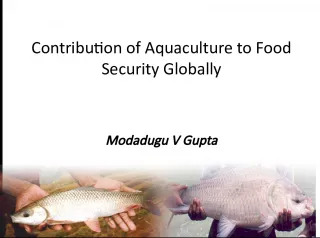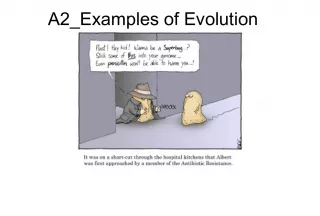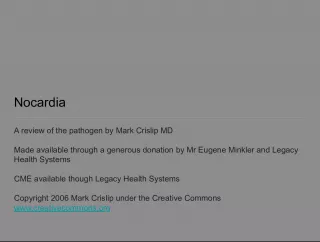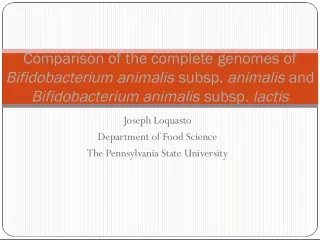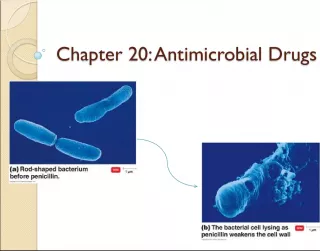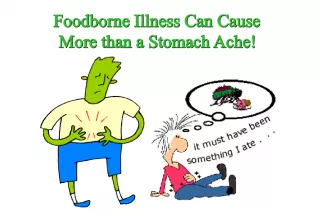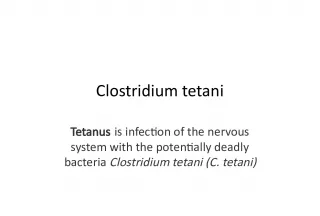Probiotic Bacteria in Aquaculture
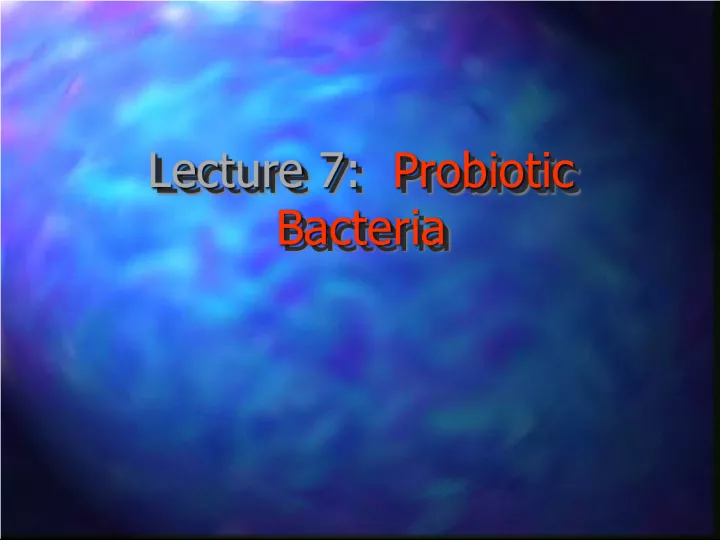

This lecture explores the definition, possible modes of action, and rationale for selecting probiotics as biological control agents in aquaculture, highlighting recent findings and future directions.
- Uploaded on | 4 Views
-
 jesushenry
jesushenry
About Probiotic Bacteria in Aquaculture
PowerPoint presentation about 'Probiotic Bacteria in Aquaculture'. This presentation describes the topic on This lecture explores the definition, possible modes of action, and rationale for selecting probiotics as biological control agents in aquaculture, highlighting recent findings and future directions.. The key topics included in this slideshow are . Download this presentation absolutely free.
Presentation Transcript
1. Lecture 7: Probiotic Bacteria Lecture 7: Probiotic Bacteria Lecture 7: Probiotic Bacteria Lecture 7: Probiotic Bacteria
2. Lecture Outline Lecture Outline n Introduction/Definition of Probiotics n Introduction/Definition of Probiotics n Fundamental Questions n Fundamental Questions n Recent Findings n Recent Findings n Possible Modes of Action n Possible Modes of Action n Rationale for Selecting Probiotics n Rationale for Selecting Probiotics n Conclusions and Further Directions n Conclusions and Further Directions Source of notes: Verschuere, L., Rombaut, G., Sorgeloos, P., and Verstraete, W., 2000. Probiotic bacteria as biological control agents in aquaculture. Microb. Mol. Biol. Rev., 64(4):655-671.
3. Introduction Introduction n As we know, aquaculture is growing faster than beef cattle production (10% vs. 3%) n As we know, aquaculture is growing faster than beef cattle production (10% vs. 3%) n Epizootics are a significant constraint to development n Epizootics are a significant constraint to development n Disease is major limiting factor in shrimp subsector n Disease is major limiting factor in shrimp subsector n Disinfectants, antimicrobial drugs have had little effect in controlling disease n Disinfectants, antimicrobial drugs have had little effect in controlling disease n Massive use of antimicrobials increases selective pressure on microbes and encourages natural emergence of bacterial resistance n Massive use of antimicrobials increases selective pressure on microbes and encourages natural emergence of bacterial resistance n Resistant bacteria thrive after non-resistant strains have been killed and can even pass on resistance genes to other bacteria that have not been exposed to antibiotics n Resistant bacteria thrive after non-resistant strains have been killed and can even pass on resistance genes to other bacteria that have not been exposed to antibiotics
4. Introduction Introduction n Emphasis should be place on prevention n Emphasis should be place on prevention n More cost-effective than cure n More cost-effective than cure n Antimicrobials, disinfectants and pesticides largely treat symptoms of the problem and not the cause n Antimicrobials, disinfectants and pesticides largely treat symptoms of the problem and not the cause n Alternative strategies are just catching on n Alternative strategies are just catching on n Example : via vaccination, Norway has reduced chemical therapeutant use from 50 MT in 1987 to less than 747 kg in 1997 (with 7x concomitant production increase!) n Example : via vaccination, Norway has reduced chemical therapeutant use from 50 MT in 1987 to less than 747 kg in 1997 (with 7x concomitant production increase!) n Other : use of immunostimulants w/or w/out vaccines n Other : use of immunostimulants w/or w/out vaccines
5. Introduction Introduction n Use of bacteria as a food source and as a biological control agent of fish disease was first proposed by Yasuda and Taga (1980) n Use of bacteria as a food source and as a biological control agent of fish disease was first proposed by Yasuda and Taga (1980) n Vibrio alginolyticus has been used as a probiotic in shrimp hatcheries in Ecuador since 1992 n Vibrio alginolyticus has been used as a probiotic in shrimp hatcheries in Ecuador since 1992 n Reduced hatchery down time from 7 days per month to less than 21 days per year! n Reduced hatchery down time from 7 days per month to less than 21 days per year! n FAO has now designated use of probiotics as a major means for improvement of aquatic environmental quality n FAO has now designated use of probiotics as a major means for improvement of aquatic environmental quality n Ultimate goal : make aquaculture products more acceptable to consumers n Ultimate goal : make aquaculture products more acceptable to consumers
6. Definition of Probiotics Definition of Probiotics n Many proposed, however: a live microbial feed supplement which beneficially affects the host animal by improving its intestinal balance n Many proposed, however: a live microbial feed supplement which beneficially affects the host animal by improving its intestinal balance n Historically: terrestrial animals, genus Lactobacillus n Historically: terrestrial animals, genus Lactobacillus n Definition (above) requires some additional considerations: n Definition (above) requires some additional considerations: 1) bacteria in aquatic medium influence composition of gut microbiota and vice versa 1) bacteria in aquatic medium influence composition of gut microbiota and vice versa 2) immediate ambient environment has much greater influence on microbiota than with terrestrials 2) immediate ambient environment has much greater influence on microbiota than with terrestrials n In aquatic environments, hosts and microorganisms share the ecosystem n In aquatic environments, hosts and microorganisms share the ecosystem n Terrestrials: the gut represents a moist habitat in a water-limited world n Terrestrials: the gut represents a moist habitat in a water-limited world
7. Definition of Probiotics Definition of Probiotics n Big Issue 1 : aquatics are surrounded by an environment supporting their pathogens independently of the host animal n Big Issue 1 : aquatics are surrounded by an environment supporting their pathogens independently of the host animal n Result : opportunistic pathogens can reach high densities around the fish/shrimp n Result : opportunistic pathogens can reach high densities around the fish/shrimp n Surrounding bacteria are commonly ingested with the feed or via drinking (maximum case: filter feeders) n Surrounding bacteria are commonly ingested with the feed or via drinking (maximum case: filter feeders) n Research in probiotics began with fish juveniles but more attention recently given to shrimp and finfish larvae n Research in probiotics began with fish juveniles but more attention recently given to shrimp and finfish larvae n Big Issue 2 : terrestrials have inherent colonizing bacteria from the mother, aquatics largely spawned as axenic eggs (no further contact with parent) n Big Issue 2 : terrestrials have inherent colonizing bacteria from the mother, aquatics largely spawned as axenic eggs (no further contact with parent) n Ambient bacteria colonize eggs surface, young larvae often have no developed gut (e.g., shrimp), no microbial community in gut, gills or skin n Ambient bacteria colonize eggs surface, young larvae often have no developed gut (e.g., shrimp), no microbial community in gut, gills or skin n Point : properties of bacteria in ambient water are very important n Point : properties of bacteria in ambient water are very important
8. Definition of Probiotics Definition of Probiotics n Better definition : a live microbial adjunct which has a beneficial effect on the host by modifying the host-associated or ambient microbial community, by insuring improved use of feed or by enhancing its nutrition, by enhancing the host response towards disease, or by improving quality of the ambient environment n Better definition : a live microbial adjunct which has a beneficial effect on the host by modifying the host-associated or ambient microbial community, by insuring improved use of feed or by enhancing its nutrition, by enhancing the host response towards disease, or by improving quality of the ambient environment n Our focus : response towards disease and improvement of the ambient environment n Our focus : response towards disease and improvement of the ambient environment n Jobs of Microbial Adjuncts: n Jobs of Microbial Adjuncts: 1) microbial adjuncts preventing proliferation of pathogens in gut or elsewhere; 1) microbial adjuncts preventing proliferation of pathogens in gut or elsewhere; 2) improved digestibility; 2) improved digestibility; 3) deliver improved nutrition to aquatics; 3) deliver improved nutrition to aquatics; 4) enhancing host response to disease (acquired); 4) enhancing host response to disease (acquired); 5) improved environmental quality. 5) improved environmental quality.
9. Can you Manipulate Microbial Communities? Can you Manipulate Microbial Communities? n Difficult: 1) discontinuous culture cycles; 2) disinfection during pond prep; 3) sudden increases in nutrients due to feeding n Difficult: 1) discontinuous culture cycles; 2) disinfection during pond prep; 3) sudden increases in nutrients due to feeding n Unlikely under intensive rearing n Unlikely under intensive rearing n Must consider deterministic factors (known response): salinity, temp, quality/quantity of feed n Must consider deterministic factors (known response): salinity, temp, quality/quantity of feed n Point: the environment selects the range of microbes (axiom of environmental selection) n Point: the environment selects the range of microbes (axiom of environmental selection) n Stochastic factors : chance, right place/right time n Stochastic factors : chance, right place/right time n Evidence: identical cultures started simultaneously yield different assemblages n Evidence: identical cultures started simultaneously yield different assemblages
10. Can you Manipulate Microbial Communities? Can you Manipulate Microbial Communities? n Concept : instead of accidental colonization, start with a probiotic that is well adapted to prevailing environmental conditions n Concept : instead of accidental colonization, start with a probiotic that is well adapted to prevailing environmental conditions n This is probably better than competing with a dominant, well- established, non-probiotic n This is probably better than competing with a dominant, well- established, non-probiotic n Long-term exposure is often required to achieve a probiotic effect n Long-term exposure is often required to achieve a probiotic effect n Does the probiotic have to be continuously introduced to the culture? n Does the probiotic have to be continuously introduced to the culture? n Evidence : in most cases, yes (at least with Lactobacillus sp. ) n Evidence : in most cases, yes (at least with Lactobacillus sp. ) n Most fish contain a specific intestinal microbiota established at the juvenile stage n Most fish contain a specific intestinal microbiota established at the juvenile stage n Unless the host has been exposed to a limited range of microorganisms in its development, a single addition wont result in long-term colonization n Unless the host has been exposed to a limited range of microorganisms in its development, a single addition wont result in long-term colonization
11. Recent Findings Recent Findings n As mentioned, it all started with Yasuda and Taga (1980); n As mentioned, it all started with Yasuda and Taga (1980); n Usually added in feed or to culture water as preventative agents against infection by pathogenic bacteria n Usually added in feed or to culture water as preventative agents against infection by pathogenic bacteria n Nutritional benefits are usually secondary n Nutritional benefits are usually secondary n Typical genera: Lactobacillus , Vibrio , Bacillus , Pseudomonas n Typical genera: Lactobacillus , Vibrio , Bacillus , Pseudomonas n The following is a summary of findings based on various aquatic species n The following is a summary of findings based on various aquatic species
12. Recent Findings: fish eggs/larvae Recent Findings: fish eggs/larvae n For incubators, use of antibiotics must be minimal n For incubators, use of antibiotics must be minimal n Antibiotics dont represent control; instead, unfavorable alteration of microbiota n Antibiotics dont represent control; instead, unfavorable alteration of microbiota n Goal : establish colonization on the egg prior to pathogen colonization (i.e., no substrate) n Goal : establish colonization on the egg prior to pathogen colonization (i.e., no substrate) n This, in turn, affects subsequent gut colonization n This, in turn, affects subsequent gut colonization n Once initial feeding has started, probiotics typically added to culture water or culture medium of live feed items (e.g., algae, rotifers, etc.) n Once initial feeding has started, probiotics typically added to culture water or culture medium of live feed items (e.g., algae, rotifers, etc.) n Result : improved survival, faster growth n Result : improved survival, faster growth n Mechanism? Production of antibiotics or siderophores (metal sequesterers) n Mechanism? Production of antibiotics or siderophores (metal sequesterers)
13. Recent Findings: finfish Recent Findings: finfish n Digestive tract of finfish contains 10 8 cells/g (Ringo et al., 1995) n Digestive tract of finfish contains 10 8 cells/g (Ringo et al., 1995) n For cod, Gadus gadus, gut is colonized by similar bacteria as found in eggs (Hansen and Olafsen, 1999) n For cod, Gadus gadus, gut is colonized by similar bacteria as found in eggs (Hansen and Olafsen, 1999) n Putative probiotics added as soon as possible after hatching in order to colonize gut prior to feeding (Ringo and Vadstein, 1998) n Putative probiotics added as soon as possible after hatching in order to colonize gut prior to feeding (Ringo and Vadstein, 1998) n Turbot and dab harbor bacteria capable of suppressing growth of V . anguillarum (Ollson et al., 1992) n Turbot and dab harbor bacteria capable of suppressing growth of V . anguillarum (Ollson et al., 1992) n V . alginolyticus was effective in reducing disease caused by Aeromonas salmonicida in Atlantic salmon (Austin et al., 1995) n V . alginolyticus was effective in reducing disease caused by Aeromonas salmonicida in Atlantic salmon (Austin et al., 1995)
14. Recent Findings: finfish Recent Findings: finfish n Kennedy et al. (1998) showed addition of a Gram-positive probiotic increased survival, size uniformity, and growth rate of snook, red drum, spotted sea trout and striped mullet. n Kennedy et al. (1998) showed addition of a Gram-positive probiotic increased survival, size uniformity, and growth rate of snook, red drum, spotted sea trout and striped mullet. n Gram et al. (1999) reported a strain of Pseudomonas fluorescens reduced mortality of 40 g rainbow trout infected with pathogenic V . anguillarum n Gram et al. (1999) reported a strain of Pseudomonas fluorescens reduced mortality of 40 g rainbow trout infected with pathogenic V . anguillarum n Garcia-de-la-Banda et al. (1992) added Streptococcus lactis and Lactobacillus bulgaricus to rotifers and Artemia sp. nauplii and recorded 6x higher survival at weaning than untreated controls n Garcia-de-la-Banda et al. (1992) added Streptococcus lactis and Lactobacillus bulgaricus to rotifers and Artemia sp. nauplii and recorded 6x higher survival at weaning than untreated controls n Nikoskelainen et al. (2003) showed immune enhancement in rainbow trout via Lactobacillus rhamnosus supplemented in feeds n Nikoskelainen et al. (2003) showed immune enhancement in rainbow trout via Lactobacillus rhamnosus supplemented in feeds
15. Recent Findings: shrimp Recent Findings: shrimp n Broad application in hatcheries, but few in-depth studies published n Broad application in hatcheries, but few in-depth studies published n often used as food source (e.g., soil bacteria for P. monodon nauplii) n often used as food source (e.g., soil bacteria for P. monodon nauplii) n improved survival (57% vs. 0%) after 13 days against V. anguillarum n improved survival (57% vs. 0%) after 13 days against V. anguillarum n improved survival of L. vannamei PLs inoculated with V. alginolyticus (non-pathogenic) vs. oxytet and control (Garriques and Arivalo, 1995) n improved survival of L. vannamei PLs inoculated with V. alginolyticus (non-pathogenic) vs. oxytet and control (Garriques and Arivalo, 1995) n Griffith (1995) reported that following the introduction of probiotics in Ecuador in 1992, hatchery down-time between batches was reduced from 7 days per month to 21 days per year, production volumes increased by 35% and antimicrobial use decreased by 94% n Griffith (1995) reported that following the introduction of probiotics in Ecuador in 1992, hatchery down-time between batches was reduced from 7 days per month to 21 days per year, production volumes increased by 35% and antimicrobial use decreased by 94% n In shrimp hatcheries in New Caledonia, a strain of Pseudoalteromonas piscicida was found to inhibit the growth of Vibrio sp. (Saulnier et al., 2000) n In shrimp hatcheries in New Caledonia, a strain of Pseudoalteromonas piscicida was found to inhibit the growth of Vibrio sp. (Saulnier et al., 2000)
16. Recent Findings: bivalave molluscs Recent Findings: bivalave molluscs n Most research has focused on nutritional contributions to mollusc larvae n Most research has focused on nutritional contributions to mollusc larvae n most work in vitro wherein autochthonous strains have been isolated from scallops and have shown some inhibition to Vibrio sp. a nd Aeromonas hydrophila n most work in vitro wherein autochthonous strains have been isolated from scallops and have shown some inhibition to Vibrio sp. a nd Aeromonas hydrophila n Bacillus sp. and Lactobacillus sp. shown to depurate oysters ( Crassostrea virginica ) against V. vulnificus (Williams et al., 2001) n Bacillus sp. and Lactobacillus sp. shown to depurate oysters ( Crassostrea virginica ) against V. vulnificus (Williams et al., 2001)
17. Part II. Modes of Action of Probiotic Bacteria Part II. Modes of Action of Probiotic Bacteria
18. Modes of Action Modes of Action n Many publications about probiotics have emerged in aquaculture in the last decade n Many publications about probiotics have emerged in aquaculture in the last decade n most based on empirical arguments (simple) n most based on empirical arguments (simple) n modes of action were largely circumstantial n modes of action were largely circumstantial n several modes of action have been proposed as a result of human and agricultural applications n several modes of action have been proposed as a result of human and agricultural applications
19. Modes of Action Modes of Action n Info on terrestrial investigations has been used for aquatics (esp. Lactobacillus sp. ) n Info on terrestrial investigations has been used for aquatics (esp. Lactobacillus sp. ) n one problem: distinction between 1) the intrinsic ability of the probing to positively influence the host and 2) its ability to reach and maintain itself in the location where the effect is to be exerted n one problem: distinction between 1) the intrinsic ability of the probing to positively influence the host and 2) its ability to reach and maintain itself in the location where the effect is to be exerted n Point : does not matter if it produces siderophores or inhibitory compounds in the gut if its never ingested n Point : does not matter if it produces siderophores or inhibitory compounds in the gut if its never ingested n can be very important: Mytilus edulis (Blue Muscle) can selectively ingest/digest microbes n can be very important: Mytilus edulis (Blue Muscle) can selectively ingest/digest microbes
20. Modes of Action Modes of Action n Also, if the candidate probiont cannot proliferate in the gut it probably wont exert a strong effect n Also, if the candidate probiont cannot proliferate in the gut it probably wont exert a strong effect n will need continuous application through the diet or via the water ($$$) n will need continuous application through the diet or via the water ($$$) n summary : they must reach the location where effect is desired n summary : they must reach the location where effect is desired
21. Possible Modes of Action Possible Modes of Action production of inhibitory compounds production of inhibitory compounds competition for chemicals/available energy competition for chemicals/available energy competition for adhesion sites (exclusion) competition for adhesion sites (exclusion) enhancement of the immune response enhancement of the immune response improvement of water quality improvement of water quality interaction with phytoplankton interaction with phytoplankton a source of macro- and micro-nutrients a source of macro- and micro-nutrients enzymatic contribution to digestion enzymatic contribution to digestion
22. (1) production of inhibitory compounds (1) production of inhibitory compounds n Release of chemicals having a bactericidal or bacteriostatic effect n Release of chemicals having a bactericidal or bacteriostatic effect n ultimate result: competitive edge for nutrients/energy n ultimate result: competitive edge for nutrients/energy n production sites: in host intestine, on its surface, or in culture medium n production sites: in host intestine, on its surface, or in culture medium n products: antibiotics, bacteriocins, siderophores, lysozymes, proteases, hydrogen peroxide, organic acids (pH change) n products: antibiotics, bacteriocins, siderophores, lysozymes, proteases, hydrogen peroxide, organic acids (pH change) n exact compound is seldom identified: hence, the term inhibitory n exact compound is seldom identified: hence, the term inhibitory
23. (1) production of inhibitory compounds (1) production of inhibitory compounds n Lactobacillus sp. produces bacteriocins (toxins) n Lactobacillus sp. produces bacteriocins (toxins) n marine bacteria produce bacteriolytic enzymes against V. parahaemolyticus n marine bacteria produce bacteriolytic enzymes against V. parahaemolyticus n Alteromonas sp. produces monastatin , shown to be inhibitory against Aeromonas hydrophila n Alteromonas sp. produces monastatin , shown to be inhibitory against Aeromonas hydrophila n inhibitory effects have been shown by probiotics against aquaculture pathogens n inhibitory effects have been shown by probiotics against aquaculture pathogens n no demonstration under in vivo conditions (oops!) n no demonstration under in vivo conditions (oops!) n more research required!!! (Didnt you mention this last time??) n more research required!!! (Didnt you mention this last time??)
24. (2) Competition for Chemicals or Available Energy (2) Competition for Chemicals or Available Energy n Explains how different microbial populations exist in same ecosystem n Explains how different microbial populations exist in same ecosystem n it is likely that it occurs in the mammalian gut, but proof is lacking n it is likely that it occurs in the mammalian gut, but proof is lacking n application of the principles of competition to natural situations is not easy n application of the principles of competition to natural situations is not easy n microbial situation in ecosystems is usually controlled by heterotrophs competing for organic substrates as both carbon and energy sources n microbial situation in ecosystems is usually controlled by heterotrophs competing for organic substrates as both carbon and energy sources n if you know the factors affecting microbial composition of the microbiota, you can manipulate it n if you know the factors affecting microbial composition of the microbiota, you can manipulate it
25. (2) Competition for Chemicals or Available Energy (2) Competition for Chemicals or Available Energy n All microorganisms require iron for growth n All microorganisms require iron for growth n siderophore: low mw ferric ion-specific chelating agents n siderophore: low mw ferric ion-specific chelating agents n dissolve precipitated Fe and make it available for microbial growth n dissolve precipitated Fe and make it available for microbial growth n siderophores scavenge Fe and make it unavailable to other species n siderophores scavenge Fe and make it unavailable to other species n this occurs at tissue level n this occurs at tissue level n probiotics producing siderophores can outcompete pathogens for Fe, thus limiting pathogen growth n probiotics producing siderophores can outcompete pathogens for Fe, thus limiting pathogen growth n works best with pathogens that also produce siderophores (e.g., V. anguillarum ) n works best with pathogens that also produce siderophores (e.g., V. anguillarum )
26. (3) Competition for Adhesion Sites (3) Competition for Adhesion Sites n Competition for gut adhesion sites would limit colonization n Competition for gut adhesion sites would limit colonization n adhesion to enteric mucus is necessary for bacteria to become established in fish intestines n adhesion to enteric mucus is necessary for bacteria to become established in fish intestines this is probably the first probiotic effect this is probably the first probiotic effect adhesion can be specific (based on adhesin and receptor molecules) or non-specific (based on physiochemical factors) adhesion can be specific (based on adhesin and receptor molecules) or non-specific (based on physiochemical factors) total probiotic effect is probably a mixture of site competition, production of inhibitory compounds and nutrient/energy competition total probiotic effect is probably a mixture of site competition, production of inhibitory compounds and nutrient/energy competition
27. (4) Enhancement of Immune Response (4) Enhancement of Immune Response n Rem definition of an immunostimulant ? Chemical compounds that activate the immune systems of animals and render them more resistant to infections by viruses, bacteria, fungi and parasites. n Rem definition of an immunostimulant ? Chemical compounds that activate the immune systems of animals and render them more resistant to infections by viruses, bacteria, fungi and parasites. n Immune response varies in animals n Immune response varies in animals n lactic acid bacteria administered orally may induce increased resistance to enteric infections n lactic acid bacteria administered orally may induce increased resistance to enteric infections n problem: only shown with specific cell compounds or dead cells n problem: only shown with specific cell compounds or dead cells n good indications, but no proof n good indications, but no proof
28. (5) Improvement of Water Quality (5) Improvement of Water Quality n Proposed as a mode of action as a result of monitoring water quality after addition of probiotics n Proposed as a mode of action as a result of monitoring water quality after addition of probiotics n usually associated with Bacillus sp. n usually associated with Bacillus sp. n Hook : gram + bacteria are better converters of organic matter back to CO 2 than gram - n Hook : gram + bacteria are better converters of organic matter back to CO 2 than gram - n thus : phytoplankton blooms are more easily maintained (interesting research area!) n thus : phytoplankton blooms are more easily maintained (interesting research area!) n monitor : DOC, POC n monitor : DOC, POC n so far, hasnt been demonstrated n so far, hasnt been demonstrated
29. Rationale for Selecting Probiotics Rationale for Selecting Probiotics Verschuere et al. (2000)
30. Background Info Background Info n Profound knowledge of culture n Profound knowledge of culture n Critical review of available literature n Critical review of available literature n Characterization of abiotic and biotic environment impacting culture n Characterization of abiotic and biotic environment impacting culture n Must know relationship between microbiota and host well-understood n Must know relationship between microbiota and host well-understood n Relationship between microbiota and carrying capacity of environment n Relationship between microbiota and carrying capacity of environment
31. Acquisition of Putative Probiotics Acquisition of Putative Probiotics n Are putative probiotics (isolated from host or host environment) better than those from other sources? n Are putative probiotics (isolated from host or host environment) better than those from other sources? n Putatives might be better due to fact they are already adhered to gut wall (i.e., could block pathogen adhesion) n Putatives might be better due to fact they are already adhered to gut wall (i.e., could block pathogen adhesion) n If a non-pathogenic bacterium exists at high density in typical culture water, it will be well- adapted to prevailing conditions and can probably compete efficiently with pathogens for nutrients n If a non-pathogenic bacterium exists at high density in typical culture water, it will be well- adapted to prevailing conditions and can probably compete efficiently with pathogens for nutrients
32. Screening of Putatives: In-vitro antagonism testing Screening of Putatives: In-vitro antagonism testing n Candidates are exposed to pathogen in liquid or solid medium n Candidates are exposed to pathogen in liquid or solid medium n screened for production of inhibitory compounds (bacteriocins), siderophores, or on competition for nutrients n screened for production of inhibitory compounds (bacteriocins), siderophores, or on competition for nutrients n must be undertaken with extreme caution: not all media are suitable n must be undertaken with extreme caution: not all media are suitable n probionts are finicky as to on which medium they produce inhibitory compounds (e.g., marine agar vs. TSB) n probionts are finicky as to on which medium they produce inhibitory compounds (e.g., marine agar vs. TSB)
33. Evaluation of Pathogenicity Evaluation of Pathogenicity n Probiotics must not be pathogenic to the host organism -- this must be confirmed prior to acceptance n Probiotics must not be pathogenic to the host organism -- this must be confirmed prior to acceptance n host must be challenged under stressed and non- stressed conditions n host must be challenged under stressed and non- stressed conditions n usually accomplished by adding probiotic to the culture water n usually accomplished by adding probiotic to the culture water n proper way to do this under monoxenic conditions (only the probiont present) n proper way to do this under monoxenic conditions (only the probiont present) n also look at interaction with other food organisms found simultaneously in culture (e.g., algae) n also look at interaction with other food organisms found simultaneously in culture (e.g., algae)
34. In-vivo Evaluations In-vivo Evaluations n Involves introducing candidate species to host cultures and monitoring growth, survival, physiochemical parameters n Involves introducing candidate species to host cultures and monitoring growth, survival, physiochemical parameters n means of addition : addition to artificial diet, addition to culture water, bathing, addition via live food n means of addition : addition to artificial diet, addition to culture water, bathing, addition via live food n next step : experimental (allochthonous) infection of host via immersion n next step : experimental (allochthonous) infection of host via immersion n needs long-term evaluation (is the pathogenic effect one of suppression or delay?) n needs long-term evaluation (is the pathogenic effect one of suppression or delay?)
35. Conclusions/Future Conclusions/Future n Current status of probiotics in aquaculture is really hazy n Current status of probiotics in aquaculture is really hazy n Lack of knowledge on modes of actions is very evident n Lack of knowledge on modes of actions is very evident n more info on competitive processes between bacteria is required n more info on competitive processes between bacteria is required n more info on relationship between bacteria and other microbiota required n more info on relationship between bacteria and other microbiota required n economic value/efficiency, anyone??? n economic value/efficiency, anyone???
